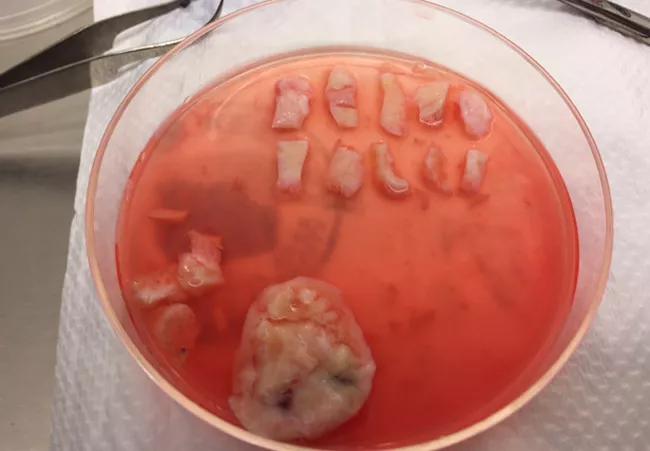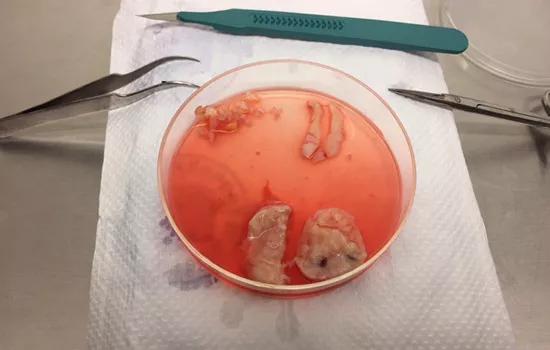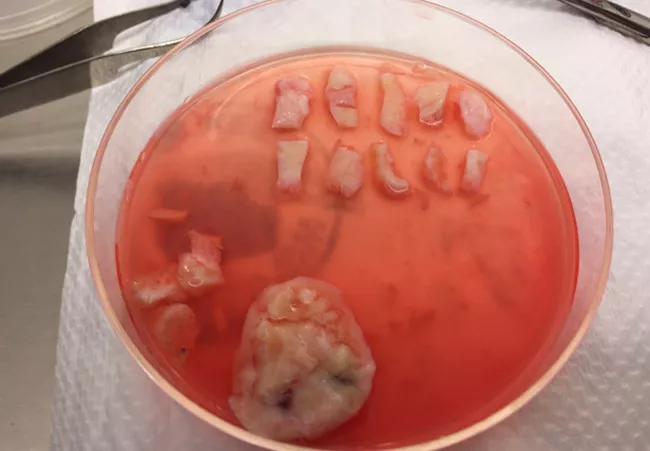Techniques used for both pediatric and adult patients

Six-year-old Maddie1 was enjoying a typical childhood summer with her parents in 2015. But her life changed suddenly and dramatically when she was diagnosed with aplastic anemia. In severe cases like hers, when other treatments fail, bone marrow transplant is the next step.
Advertisement
Cleveland Clinic is a non-profit academic medical center. Advertising on our site helps support our mission. We do not endorse non-Cleveland Clinic products or services. Policy
Although often very successful, as in Maddie’s case, bone marrow transplants and other cancer treatments are gonadotoxic. They often cause hormone and menstrual abnormalities at the very least, and more often irreversible ovarian damage or premature menopause that renders young women completely infertile as adults.
Her Cleveland Clinic pediatric hematologist-oncologist Rabi Hanna, MD, decided to refer Maddie and her family to Rebecca Flyckt, MD, at Cleveland Clinic Fertility Center to discuss fertility preservation options.
“Until recently, options to protect and preserve fertility in women prior to cancer treatment have been limited, including the ‘gold standard’ egg and embryo freezing,” notes Dr. Flyckt. “Plus, it is available only to postpubertal females, meaning girls and young teenagers facing cancer treatment had no options to preserve fertility.”
In addition, egg and embryo freezing may not be possible or desirable for adult women who cannot delay immediate cancer treatment or who cannot participate in expensive and involved IVF procedures for other reasons.
Over the past several decades, a promising new approach to preserve fertility in younger patients and older women ineligible for egg and embryo freezing — ovarian tissue freezing using vitrification — has come to the fore.
“Although still considered experimental by professional societies such as the American Society for Reproductive Medicine, to date over 80 live births have been reported worldwide using this technique,” Dr. Flyckt reports.
Advertisement
While the number of centers offering ovarian tissue freezing for girls and women with cancer is increasing in the United States, it remains limited to centers with experimental protocols and detailed informed consent procedures in place. Children require special ethical considerations.
“Vitrification (rapid tissue freezing), similar to the most current methods used to store embryos at IVF centers, eliminates ice crystal formation, the major limiting factor in older, slow-freezing techniques,” Dr. Flyckt explains. “Ovarian tissue freezing can preserve the entire ovary, and potentially thousands of viable oocytes.”
Ovarian cortical tissue is harvested through a simple laparoscopic procedure with same-day discharge and minimal surgical risk. Tissue is frozen in strips and can be stored for decades. When the woman is ready to pursue fertility, tissue is reimplanted either at the site of the ovary (orthotopic transplant) or in an alternate location (heterotopic transplant). The tissue, secured with fine sutures, can then develop a healthy blood supply. Normal endocrine and reproductive function resumes, offering opportunity for assisted reproduction or spontaneous pregnancy. No immunosuppression is needed.

Image 1. Whole ovary in culture media awaiting dissection. Recovered from breast cancer patient hoping to preserve fertility prior to chemotherapy.

Image 2: Ovary sectioned in half. Once identified, the cortex is removed from the underlying stroma and sectioned into strips small enough to allow penetration of vitrification media but large enough to be manageable for surgical reimplantation.
Advertisement

Image 3: Dissection of the first half of the ovary is complete. All usable strips of cortex have been identified and divided into equal-sized portions ready for vitrification. Remaining stroma is discarded. The same procedure will be carried out on the other half of the ovary.
Cleveland Clinic Fertility Center offers ovarian tissue freezing for adults, teenagers and prepubescent girls who face treatments that diminish fertility. A grant from VeloSano2, minimizes charges.
“The true advantages of this technique are that patients do not need to have completed puberty – so our youngest of patients are eligible,” Dr. Flyckt says. “Also, it does not delay treatment.” But she adds, “We do not know whether ultimately it will be as successful as other established techniques.”
As for Maddie? After careful discussion and planning among family and caregivers, she became the youngest patient to undergo ovarian tissue freezing process at the Cleveland Clinic. While motherhood is still very far off, she is doing extremely well, is off all major medications and living a normal life.
1A pseudonym to protect patient identity.
2Latin for “swift cure,” VeloSano is a community initiative in Cleveland, Ohio, in which participants raise money for cancer research at Cleveland Clinic through a major cycling event.
Advertisement
Advertisement

First-of-its-kind research investigates the viability of standard screening to reduce the burden of late-stage cancer diagnoses

Global R&D efforts expanding first-line and relapse therapy options for patients

Study demonstrates ability to reduce patients’ reliance on phlebotomies to stabilize hematocrit levels

A case study on the value of access to novel therapies through clinical trials

Findings highlight an association between obesity and an increased incidence of moderate-severe disease

Cleveland Clinic Cancer Institute takes multi-faceted approach to increasing clinical trial access 23456

Key learnings from DESTINY trials

Overall survival in patients treated since 2008 is nearly 20% higher than in earlier patients